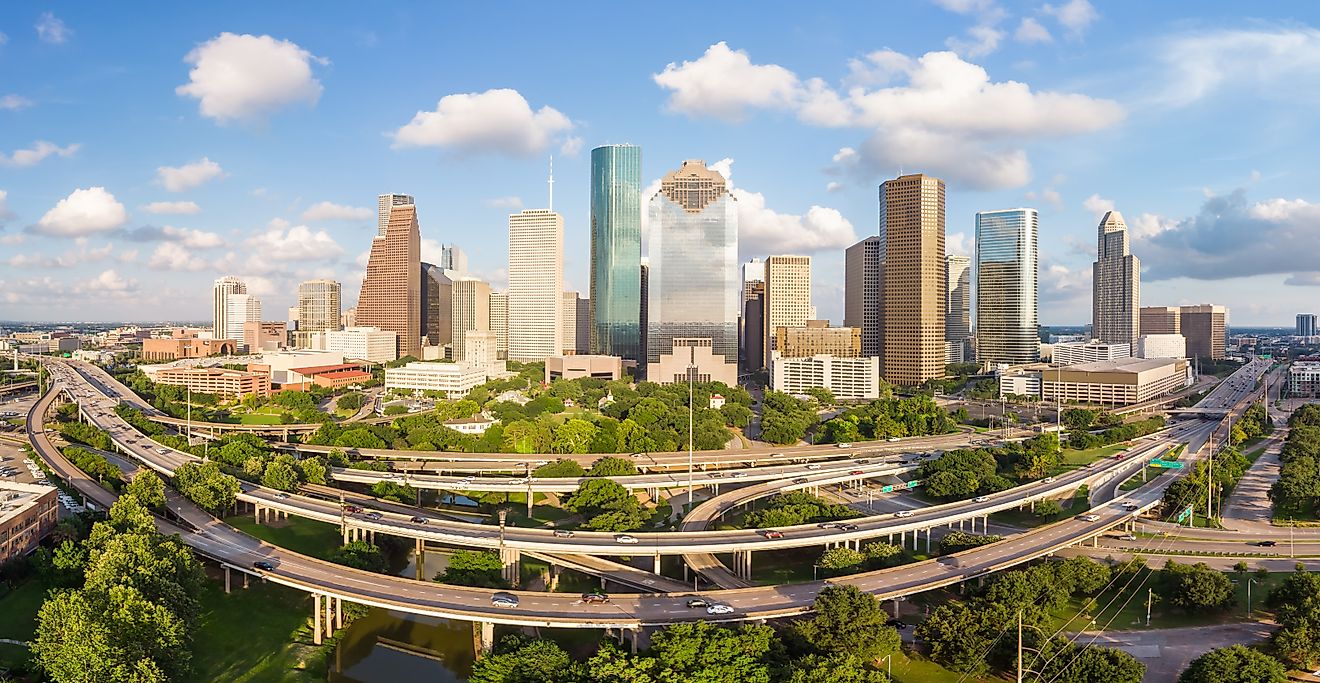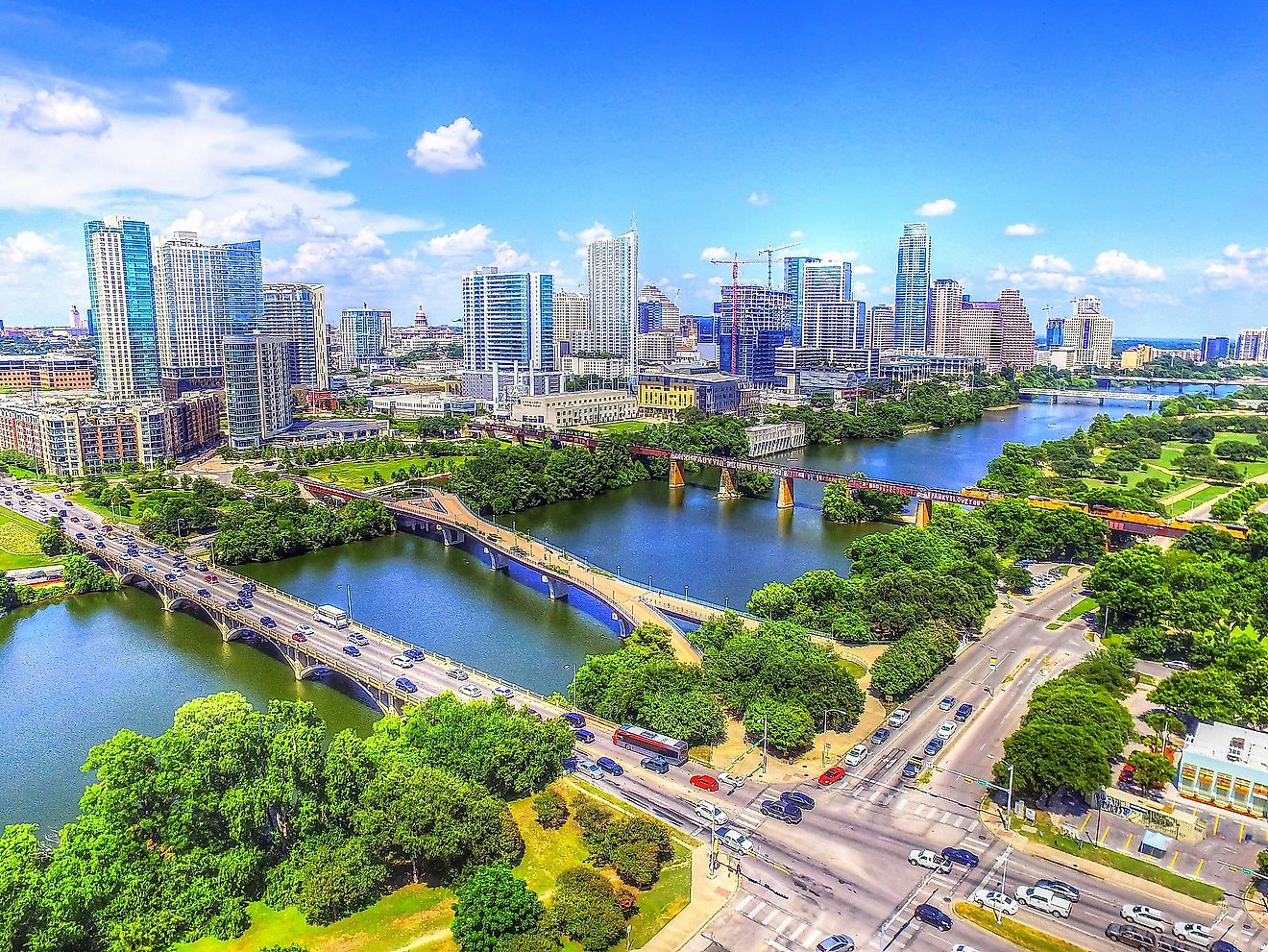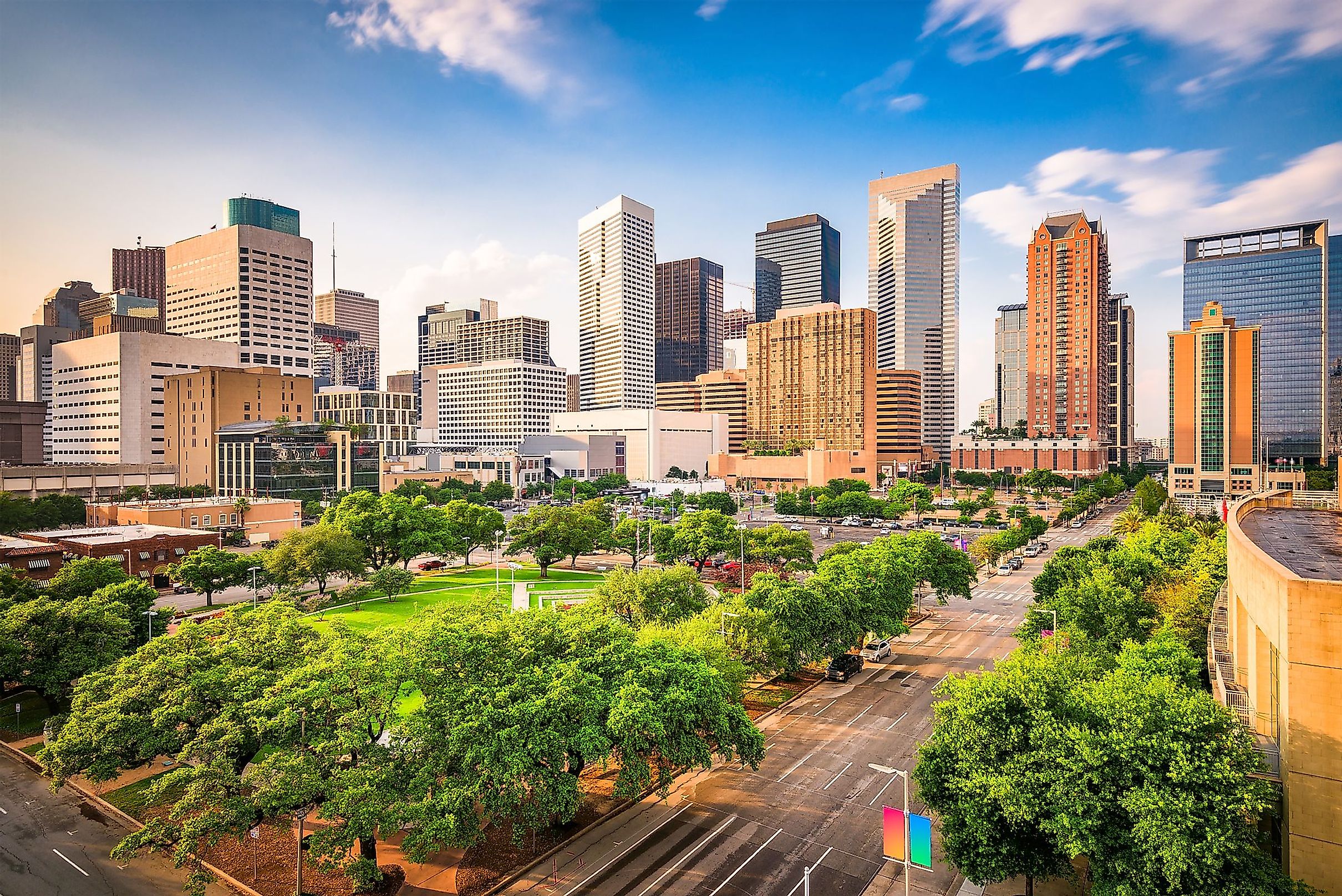
Houston, Texas
The metropolis of Texas and the largest city in the country, Houston, is a city well known worldwide. It is not just rich with diverse people but also with history and culture. The once small town on the swamps of Buffalo Bayou is now a sizeable metropolitan destination for millions of Americans and tourists every year.
Geography And Climate Of Houston
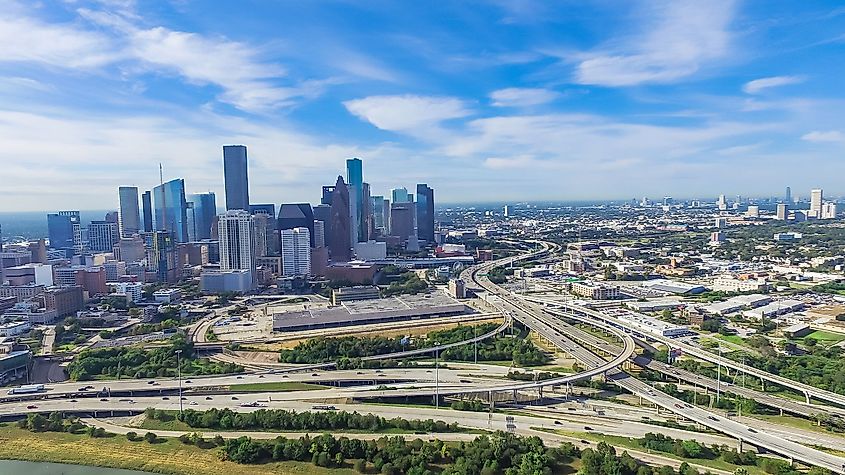
Houston is the largest city in Texas, with 601.7 square miles. The majority of Houston is situated on the Gulf Coastal Plain, with moderate grassland and woodland flora. Many parts of the city were originally built on forested terrain, marshes, swamps, or prairies. Some of these landforms are still visible in the surrounding areas. The highest point above sea level is 125 feet in the northwest, and the lowest is downtown with 50 feet. Due to its proximity to sea level and lack of altitude, Houston encounters floods frequently. There are ground-level water sources that the city is dependent on, like Lake Houston and Lake Conroe. There are also four major bayous that bisect the city. The ship canal extends till it reaches the Gulf of Mexico.
The climate in Houston is best described as humid subtropical, with frequent Tornadoes during spring supercell thunderstorms. The largest portion of the year witness southern winds that bring heat from the Mexican deserts and southeast winds that bring moisture from the Mexican Gulf. Houston is extremely hot in the Summer, with temperatures reaching 90 degrees Fahrenheit for 100 days. High humidity helps in spiking the heat index.

In the Summer, the relative humidity is around 90% in the morning and 60% in the afternoons. Utilizing air conditioning in homes, cars, and offices is necessary when the heat temperatures are peaking. People will also see intermittent afternoon thunderstorms that are prevalent during this season.Opposite to the Summer, Houston's winters are mild. January is the coldest month, with temperatures ranging between 63 degrees Fahrenheit and 41 degrees Fahrenheit. Houston receives a lot of rain on a yearly basis, averaging about 48 inches which could result in floods in several parts of the city.
A Brief History Of Houston

Houston was initially founded by the Allen brothers, John Kirby Allen and Augustus Chapman Allen, back in 1836. They planned to establish a city along the banks of the Buffalo Bayou after purchasing enormous land areas that reached 6,642 acres. They then decided to name it Houston after General Sam Houston, who was later elected as president of Texas. He was famous for his battle of San Jacinto in retaliation to the Battle of the Alamo.The city was incorporated into the Republic of Texas in 1837, only a year after the Allen brothers purchased the lands. Houston was crucial to the civil war. General John Bankhead McGruder chose the city as his headquarters and then a staging area for the Battle of Galveston. In the early 1900s, oil discoveries began to surface. The oil discovery encouraged business people to invest in the area, which led to economic growth in the petroleum industry. The city has had its fair share of natural disasters, from hurricanes to floods. In 1962, NASA decided to move the Manned Spacecraft Center to Houston, and by the year 1969, the word "Houston" was the first word uttered from the lunar surface. Now, the city is considered a cultural and economic hub of Texas and the country as well.
The Urban And Suburban Cityscape Of Houston
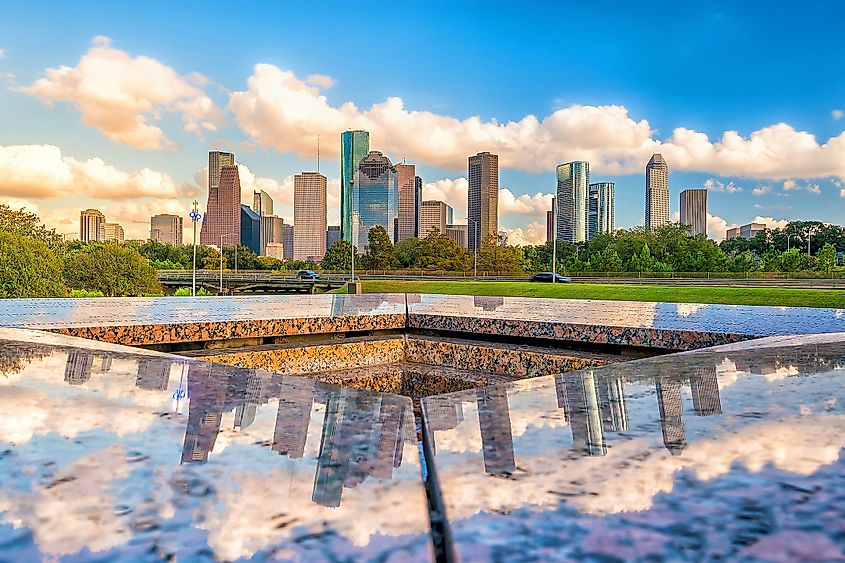
Although the city is urban in principle, the city's areas are of suburban appearance. It isn't easy to accurately detect where urban begins or suburban ends. Unlike the cities of New York, Chicago, and Los Angeles, which are primarily urban, Houston is a remarkable combination of both lifestyles. Though millions populate the city, Houston has a glamour of its own where urban and suburban mix together. This attracts many Americans to the city where they can find both ways of living, which is very rich and satisfying. Houstonians are aware of the importance of walkability and access to transportation and how this provides a more urban feel to the city, which is why Houston has an All Transit Performance score of 6.24 out of ten. Unlike other major cities famous for commonly having buildings with ground floors as retail stores or offices and top floors as residential, Houston has always been proud to have streets like Wertheimer, where you can find a variety of uses and designs side by side like an artisanal bakery next to a tattoo parlor next to a historic bungalow next to an office high-rise.
In Houston, locations are defined as being either inside or outside the Interstate 610 Loop. The inside is characterized by business and pre-World War II residential communities, while the outside is the suburbs and the enclaves. Houston's skyline has been voted the fourth most impressive in the United States; it is the third highest in the country and one of the top ten globally. The city contains a seven-mile network of tunnels and skywalks that connect downtown buildings with shops, restaurants, and convenience stores. This is perfect for pedestrians who can avoid the summer heat or the rain showers while walking around from one building to another.The famous 75-story, 1002-foot JPMorgan Chase tower, along with a series of skyscrapers, forms the city's landscape. It is the tallest building in Texas, the tenth tallest in the United States, and the world's 30th tallest skyscraper.If one knows where and how to look, one will find a uniquely Houstonian lifestyle that oozes both urban and suburban experiences.
Economy Of Houston
Energy, biomedical research, ship channel, and Aeronautics are the primary industries of Houston. This is represented by large corporations like the US Headquarters of Chevron, the international headquarters of ConocoPhillips, the US operational headquarters of Exxon-Mobil, and the US headquarters of Shell Oil. Other companies like the Marathon Oil Corporation, Apache Corporation, and Citgo also have offices in Houston.The Port of Houston is the tenth-largest port in the world and ranks #1 in international business in the United States. The city is situated at one of the top in the country in the oil equipment and the petrochemical industry because of its large man-made ship channel. There are trade and commercial offices for forty foreign governments in the city and 23 active foreign chambers of commerce and trade groups. In Houston, twenty foreign banks from ten countries provide financial help to the international community. The city of Houston is now considered one of the best economies based on its local economy, career prospects, affordable living prices, and quality of life. The last years witnessed a rise in technological innovation, which created job opportunities, business ventures, and investments.
Demographics Of Houston
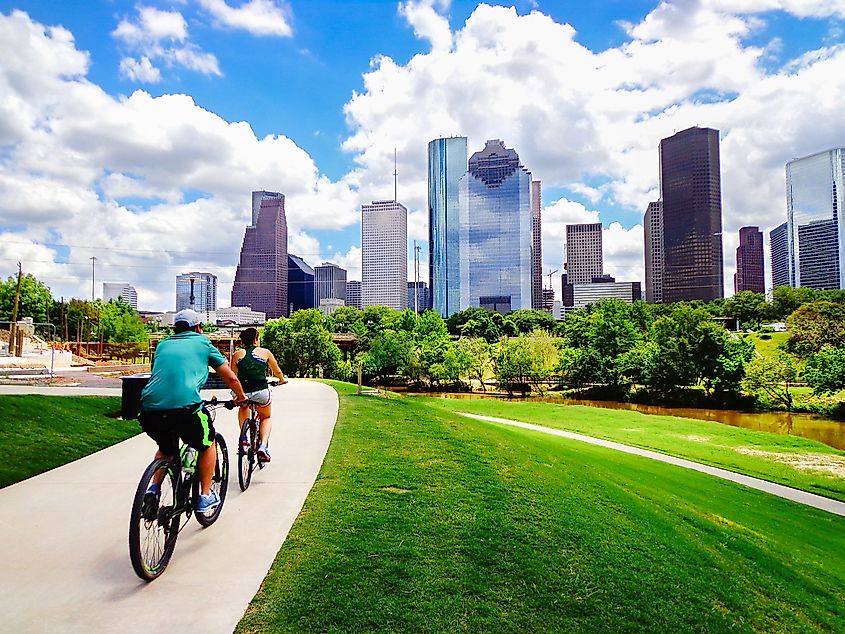
Houston is, without a doubt, one of the most diversified cities in the country. This is due to its various academic institutions and large industries requiring many workforces. The surge of immigrants into Texas resulted in Houston having one of the youngest populations in the country. In the city, around 90 languages are spoken. The city is proud to be the home to the third-largest Hispanic and Mexican-American community and one of the largest Indian-American and Pakistani-American communities in the country. There is also a huge population of Asian immigrants, including the largest Vietnamese-American community in Texas and the third-largest in the US.
Transportation In Houston
Houston's freeway system is 575.5 miles long of freeways and expressways within ten counties. Millions of passengers pass through Houston's two commercial airports every year, with the biggest being the George Bush Intercontinental Airport (IAH) and the smallest being William P. Hobby A airport.
Culture, Food, And Tourism In Houston
The arts and tourism sector is always on the rise. Starting with the heart of downtown, the theater is home to nine major performing arts groups and six performance spaces. The city is also home to several resident companies like the Houston Grand Opera, the Houston Ballet, the Houston Symphony Orchestra, and the Houston Theater & The Alley Theatre. The city is a major attraction to many music and theater lovers and a permanent home to a large number of local artists or artistic groups.

The month of October is the best month for art enthusiasts from all over the country where the city holds the Bayou City Art Festival, which is regarded as one of the top five art festivals in the country. Another famous attraction is The Museum District, which contains 18 museums. The district is home to several renowned cultural organizations and exhibits that attract nearly 7 million people every year. The district consists of several unique allures like the Houston Zoo, the Museum of Fine Arts, the Houston Museum of Natural Science, the Contemporary Arts Museum Houston, the Holocaust Museum Houston, and NASA's Lyndon B. Johnson Space Center.
There are numerous cultural and touristic events throughout the year that honor and represent Houston's diversity, with over 500 institutions dedicated to the music, theater, and the visual arts, with more than 9 million people visiting annually.With 337 parks and green areas covering 56,405 acres, Houston holds the 10th spot among the most populated cities in the US, with the most significant green zones.Houston is famous for having one of the country's top culinary scenes. It has more than 10,000 restaurants, over 600 vegan-friendly restaurants, more than 150 farm-to-table restaurants, and over 700 food trucks that offer cuisine from all over the country and the world.

NASA's Johnson Space Center, which serves as a training base and residence for the country's astronauts and Mission Control, is located at the city's borders. For decades, JSC has been the world pioneer in NASA's human space flight operations.
International Connection
Houston has consular representation from 91 countries, 18 sister-city affiliations with cities on five continents, 15 foreign governments with trade and commercial offices in the city, and 35 foreign chambers of commerce and trade organizations. More than 70 international destinations are served nonstop from Bush Intercontinental Airport, connecting over 3.5 million travelers to the city every year.


